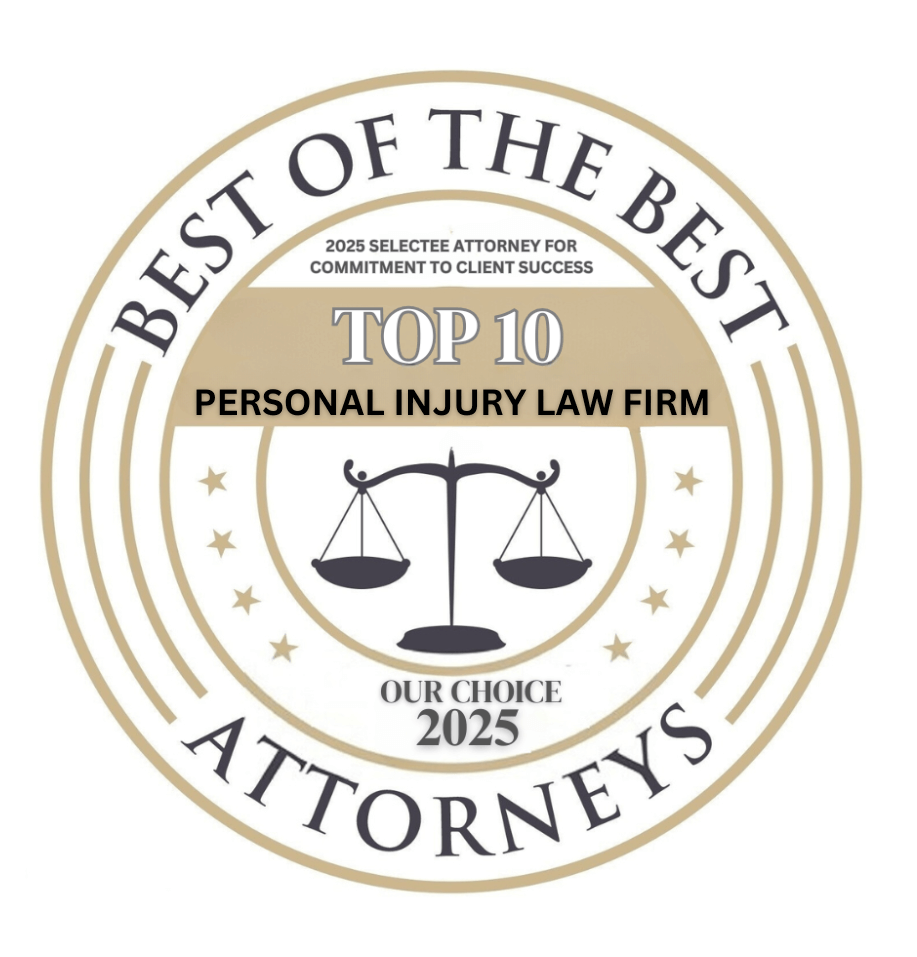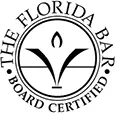Speeding is a Factor in 37.7 percent of Fatal Accidents in Washington
If you drive on Washington’s roads and highways, you’ve probably learned to be cautious of speeding drivers. Speeding is a risky yet common driving behavior. When traffic or roadway conditions present even a minor problem, excess speed sometimes leads drivers to lose control of their vehicles. When an auto accident occurs, speed increases the force of impact and heightens the potential for damage and injuries.
From 2015 to 2017, Washington law enforcement authorities documented speed as a contributing factor to 37.7 percent of fatal accidents statewide. Only alcohol and drugs present a higher risk.
When a driver is speeding, adverse circumstances come together to increase the odds of accidents and serious injuries. Because excessive speed reduces a driver’s ability to control their vehicle, a speeding driver is more likely to crash. Speed increases a car’s stopping distance. This simultaneously increases the need for a quick response while minimizing the driver’s chance of meeting the challenge. When a crash occurs, speed increases the impact severity, which can contribute to serious or catastrophic injuries. It also diminishes a vehicle’s safety system’s effectiveness, reducing the system’s ability to provide occupant protection.
Speeding Is a National Concern
Washington’s speeding issues mirror a national problem. The National Highway Traffic Safety Administration lists speeding as one of the Risky Driving Behaviors that consistently cause accidents. A network of concerned national agencies spend time and energy tracking and reporting the numbers. Providing critical information about speed-related accidents and deaths is an important element of local and national prevention programs. For example:
- The NHTSA documented 9,717 speed-related accident fatalities nationwide during 2017.
- Speed was a factor in 26 percent of all traffic fatalities nationwide.
- 49 percent of speeding drivers in fatal accidents were not wearing seatbelts when they crashed.
- For more than two decades, speed has been a factor in one-third of all accidents nationwide.
- Research from the Insurance Institute of Highway Safety ties increased speed limits to 37,000 deaths over a 25-year period. That figure includes 1,900 fatalities in 2017.
- The Governor’s Highway Safety Association calls speed a forgotten safety challenge.
Speeding Is Aggressive Driving
The NHTSA explains that speeding is an aggressive driving behavior and it’s occurring more frequently. Aggressive driving is often an overreaction to traffic conditions that are out of the driver’s control. If you drive, you will be forced to at least occasionally share the road with aggressive drivers. It’s important to recognize the circumstances that sometimes trigger speeding and other threatening behaviors on the road. These can include:
- Traffic congestion: When caught in traffic, some drivers respond with improper lane changes, overt expressions of anger directed at other drivers, and excessive speed.
- Schedule delays: Drivers sometimes act aggressively in traffic simply because they’re running late. Speeding is some drivers’ go-to response to minimize commute time.
- Anonymity: Some drivers speed because they feel anonymous while they’re in their cars. Their vehicles allow them to feel set-apart from others so they feel less compelled to control their behavior.
- Disregard for others: While some drivers speed occasionally, speeding and other aggressive driving behaviors are the norms for some drivers.
Similarly to alcohol or drug-impaired, or fatigued drivers, aggressive drivers are unpredictable. The NHTSA suggests that drivers should initiate proper measures to avoid aggressive drivers when they’re in adjacent traffic. If an aggressive driver wants to pass you, let them. Allow a cushion of space between your cars in case the aggressive driver loses control. Don’t let an aggressive driver intimidate you into similarly aggressive behavior. The NHTSA also recommends that if an aggressive driver makes you feel threatened, you should call local law enforcement authorities.
NHTSA National Speed Surveys
When the National Highway Traffic Safety Administration conducts speed surveys, they confirm that excessive speed isn’t an isolated problem. The agency published its most recent findings in the 2018 report, National Traffic Speeds Survey III. The report analyzes research conducted nationwide during 2015. The study concluded that most drivers exceed posted speed limits.
The most recent study analyzes randomly collected speed data from devices placed on all types of highways and roads. The research team used self-contained on-road sensors and trailer-mounted side-fire units. They left the devices in place for 24-hour periods to collect speed data from every vehicle using a road. They placed collectors in hilly areas, flatlands, mountainous regions, and other types of terrain in urban and rural areas. During the collection periods, the devices recorded speeds from 12,330,540 vehicles and found several interesting facts:
- Vehicles were speeding at higher rates than in the previous study, which was conducted in 2009.
- The data confirmed that many drivers traveled 10 miles per hour or more over the speed limit.
- Time of day had a minimal effect on speed during the 2015 study. (In the 2009 study, speeds changed based on the time of day).
- Speed decreased with changes in road curvature and gradient.
The 2018 AAA Traffic Safety Culture Index
In discussions about speeding, cultural acceptance is a common theme. Drivers recognize that speeding is wrong yet they accept the behavior in themselves and others.
The AAA Traffic Safety Culture Index is a key indicator of this trend. This 2018 study gathered information through a survey of 3,349 drivers age 16 and older. Respondents provided answers about driving habits through KnowledgePanel®, an online platform. The respondents were representative of households in the general US population. The study found that:
- 54 percent of the drivers believed that speeding on a highway was dangerous.
- 64 percent acknowledged that speeding on a residential street was dangerous.
- 66 percent expressed a fear that if they did speed 15 mph over the speed limit, the police would catch them.
- Despite expressed fears of danger and being caught, 50 percent of the respondents reported exceeding highway speed limits by 15 miles per hour within the prior 30 days.
Speeding in Washington
Speed is just as much of a problem in Washington as it is in other states. The state has made it a priority of Target Zero, Washington’s plan to reach zero traffic fatalities and serious injuries by 2030. One of Target Zero’s goals is to keep law enforcement, communities, Tribes, and other partners involved and aware of speeding and its connection to state traffic casualties. In the state:
- 20 percent of all traffic fatalities in the state involved a combination of speeding, alcohol or drug impairment, and lane departure.
- Speed was a factor in 172 of the 565 traffic fatalities documented in the state during 2017.
- Speed-related deaths in 2017 exceeded the previous year’s speed-related fatality rate by 11.7 percent.
- Men are more likely to speed: in all fatal accidents that occurred in Washington, 30 percent of the male drivers were speeding, while only 17 percent of the female drivers were speeding.
- Highly visible enforcement is one of the most effective methods for reducing the number of speed-related accidents.
- During 2018, grant-funded mobilizations and Target Zero teams issued 10,374 speeding citations throughout the state.
Washington’s Strategic Highway Safety Plan
The Strategic Highway Safety Plan is a key element of the state’s ongoing push to achieve zero auto accident fatalities and serious injuries by 2030. Federal, state, local, and Tribal governments have partnered to focus on the top contributing factors. Since its initial implementation nearly two decades ago, the state has seen significant reductions in accident fatalities, including:
- Reductions in deaths among drivers ages 16 to 25 due to high visibility enforcement and Party Intervention Patrols;
- Reductions in deaths caused by passengers not wearing safety restraints. Authorities credit education programs and the “Click it or Ticket” campaign; and
- A reduced number of lane departure crashes.
Based on these achievements, the updated Safety Plan for 2016 projects that the state will meet some of its Project Zero goals long before 2030. The state attributes this progress to the combined efforts of targeted enforcement, improvement in highway designs, vehicle crash avoidance technology, and educational programs. Studies also include high gas prices as an overall factor.
Speed-Related Casualties Remain a Problem
Despite Target Zero measures, fatal accidents still occur in both rural and urban areas. Often, fatal and serious injury accidents combine one or more factors such as speed, youthful drivers, and drug or alcohol impairment. Washington’s Safety Plan is to address these common causes of casualties with evidence-based solutions, including:
- Broader automated speed enforcement: Officers can’t be everywhere at once. Some roads, such as those with no shoulders, physically limit speed enforcement. Except for Tacoma, Washington, state laws only allow camera-based speed enforcement in work zones, school zones, and at intersections governed by traffic signals. The Safety Plan recommends legislative changes that will allow for more cameras at key locations.
- Licensing changes: The Safety Plan recommends revised teen licensing procedures that include a higher age qualification, longer supervised driving time, and extending the learner’s permit phase to 12 months.
Automated Speed Cameras Can Help
Safety Plan research has determined that automated cameras are an effective speed deterrent. When placed at conspicuous, fixed locations, they’ve reduced speed-related crashes by 20 percent to 25 percent. With more extensive placement, authorities project that cameras will prevent 17 speed-related deaths and 1,700 injuries each year. They will also reduce crash-related costs. Upgrading the existing speed-camera system requires legislative action. Changes in state camera laws may help garner public support and acceptance and fund additional installations.
It’s Not Just About Posted Speed Limits
Speeding isn’t always about whether or not a driver complies with the posted speed limits. The limits posted along roads and highways are considered conditional. Signs reflect the maximum limit for a driver when all other conditions are favorable. If the road surface is snow-covered or traffic is backed up and slow, a reasonable driver should know to adjust their speed accordingly.
Drivers learn about speed-related strategies during driver’s training, as part of licensing test preparation, and through driving experience. Unfortunately, this knowledge is meaningless for drivers who customarily exceed both the posted and reasonable speed limits. As research shows, speeding is often tied to a driver’s tendency to resort to aggressive tactics while in traffic.
Speed-Related Accidents and Injuries
High-speed crashes often cause significant injuries because they render vehicle safety systems ineffective. As the IIHS explains, speed “increases the crash energy exponentially.“ It generates forces that neither the vehicle nor its passengers can endure.
While most studies and statistics focus on the fatalities caused by this dynamic, high-speed accidents can also cause significant injuries. Injured victims sustain traumatic brain injuries, spinal cord damage, paralysis, complex fractures, crushed bones, internal injuries, and other serious and catastrophic physical impacts. Treatment is costly and often continues indefinitely. Some injured victims deal with permanent physical impairments, family issues, and financial and lifestyle changes that last a lifetime.
The Governor’s Highway Safety Association discusses pedestrians, motorcycles, bicyclists, and speed in their report “Speeding Away From Zero.” While all types of road users are vulnerable to catastrophic injuries caused by high-speed crashes, a pedestrian often sustains severe injuries when struck by a vehicle traveling just 16 miles per hour. The chance of fatal injuries increases with the striking vehicle’s speed.
The 783 bicyclists who died in nationwide accidents during 2017 reflect a growing trend. As the number of bicycle riders increases, states are witnessing a corresponding increase in serious injuries and fatalities.
Motorcyclists present slightly different safety challenges. They often travel in traffic alongside speeding vehicles, which puts them at an even greater risk for high-speed crashes. A crash often sends a motorcyclist airborne. They land on roads or other paved surfaces that cause serious or catastrophic injuries. A helmet provides some protection but a motorcyclist’s body is still vulnerable when a speed-induced crash occurs.
Contact an Attorney if a Speeding Driver Injured You
If you or a family member has been injured in a speed-related auto accident, it’s important to discuss your situation with a personal injury attorney. Accidents are serious, regardless of the circumstances. When speed is a factor, it increases the potential for serious injuries and legal complications. A personal injury attorney has the expertise and the resources to provide insight into your most important accident-related concerns.
When you schedule a legal consultation, you have no obligation to file a lawsuit or proceed with any other legal action. A consultation allows you to discuss your accident with a knowledgeable legal professional and review your options.
Free Consultation
We Are Here For You 24/7
Reviews
– Elissa M.
“Really pleased with Boohoff Law! Received immediate responses when I had any questions. Treated amazingly by all staff … made this process a true breeze!”
– Caitlyn M.
– Brandy K.
Related Posts
Sidelined by a Sudden Door? Figuring Out Who Is Liable in a Dooring Bicycle Accident
After the Impact: Who Can Be Sued in a Commercial Truck Accident Case?
What if My Child Was Injured on a School Bus? How To Protect Their Rights and Future
Recovery is personal.
We’re here for you.
We’re close by. And if you can’t make it to us, we’ll meet you where you need us, at home or in the hospital.
You're better off with Boohoff.











The information on this website is for general information purposes only. Nothing on this site should be taken as legal advice for any individual case or situation. This information is not intended to create, and receipt or viewing does not constitute, an attorney-client relationship.
available 24/7
(877) 999-9999
